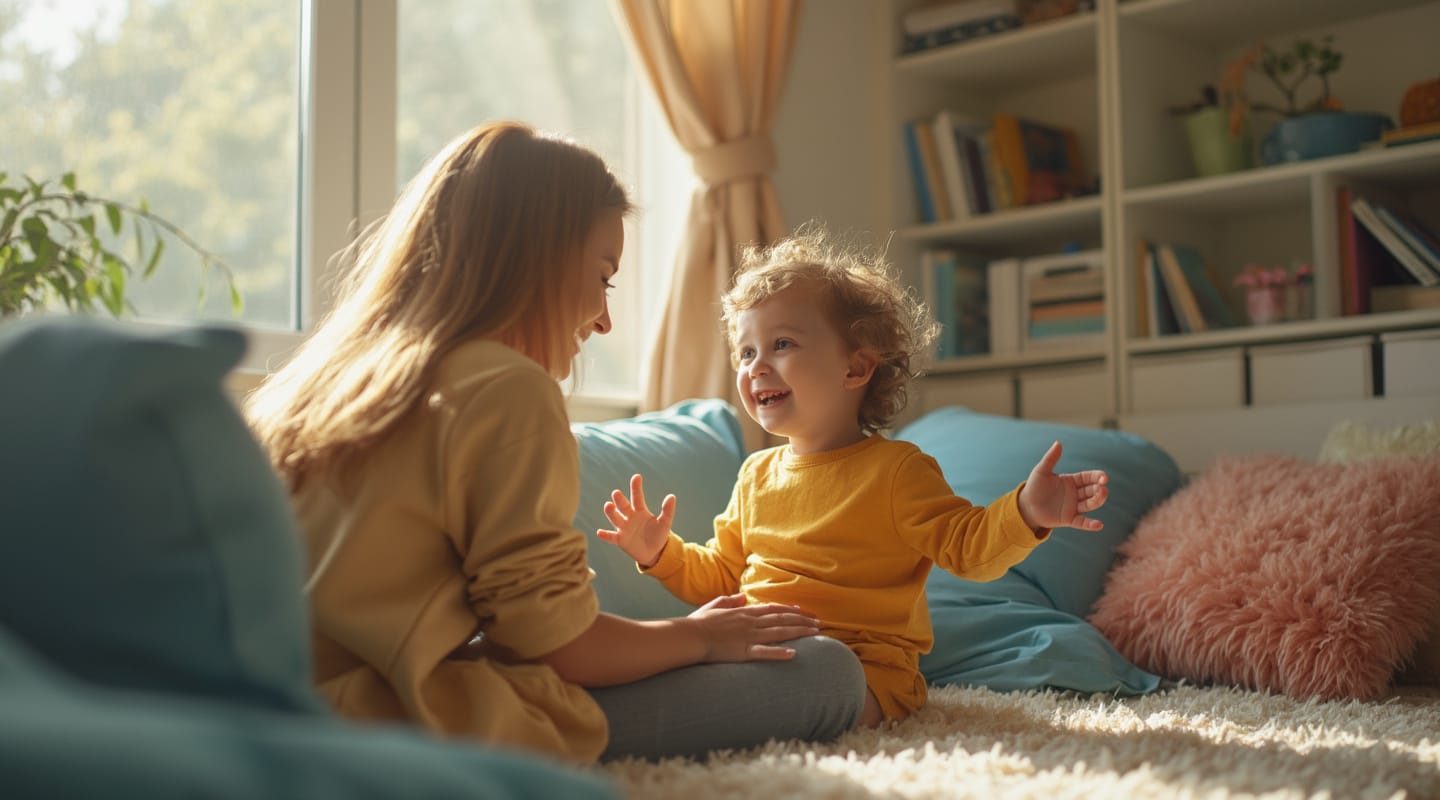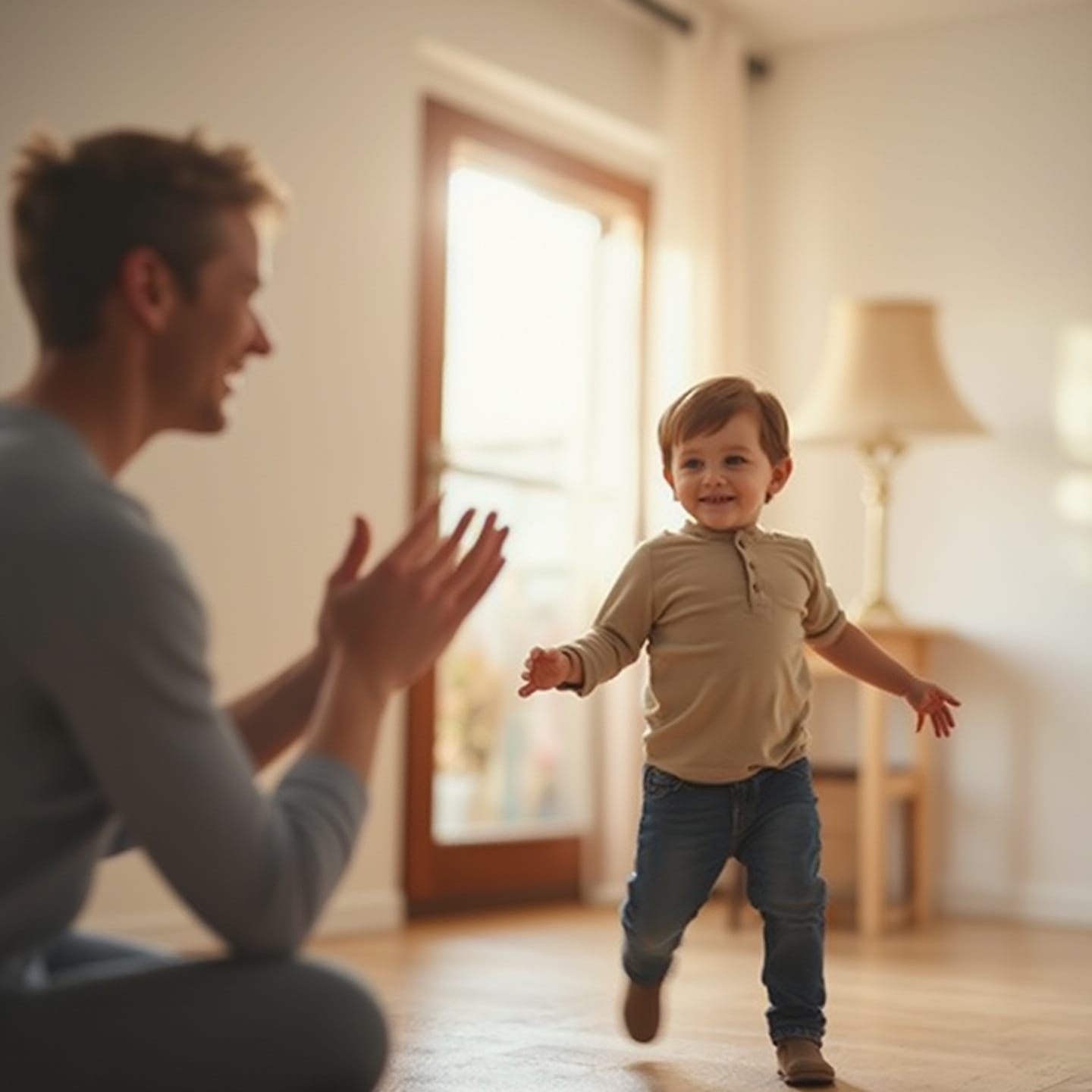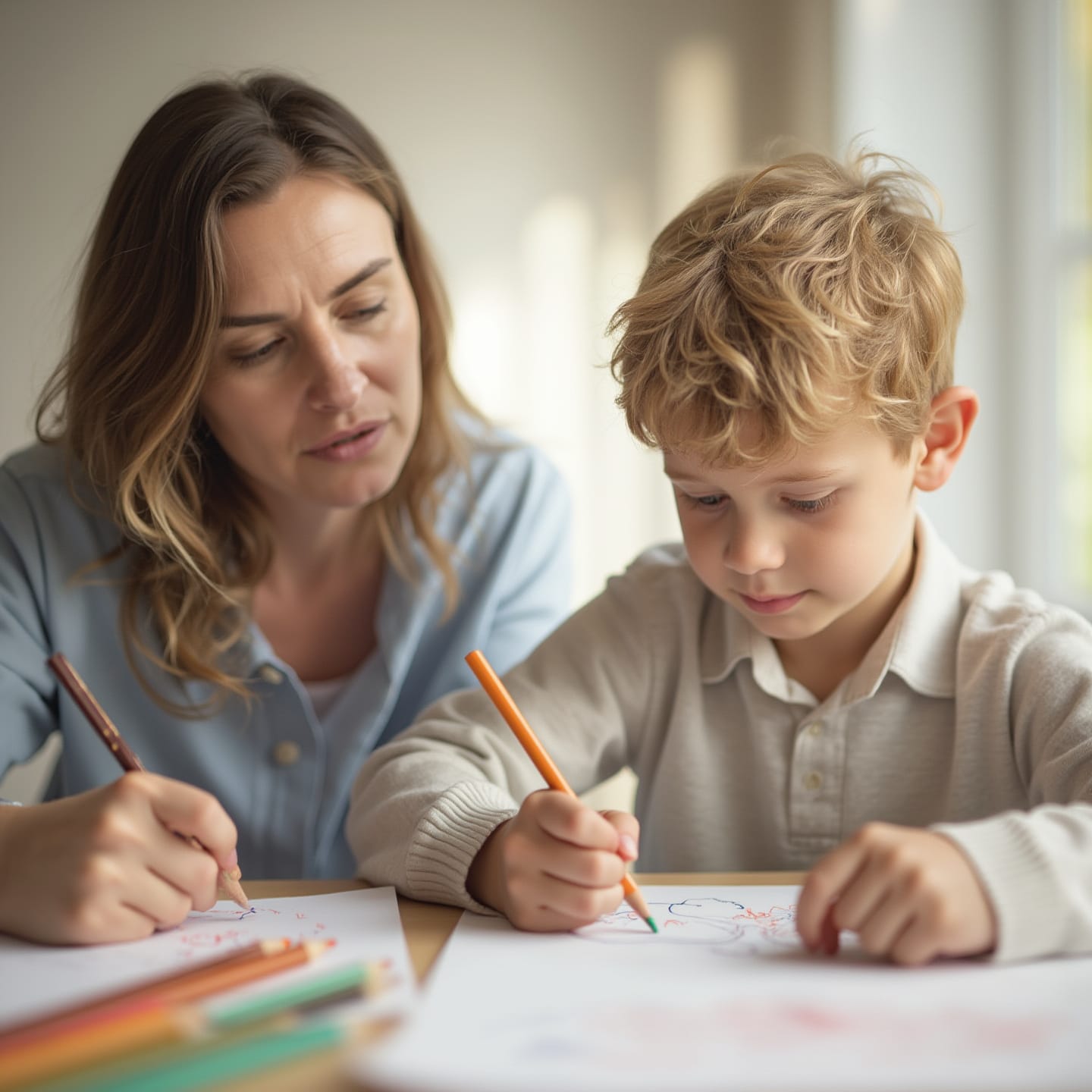
The Most Magical Tool in my Parent Toolkit
Raising children is one of the most challenging jobs, and despite that, many people feel utterly underprepared. I want …
Read more
By: Dr. Zia

In my years working with children struggling with anxiety, one truth repeatedly surfaces: the foundation of effective intervention isn’t found in perfect technique or the latest therapeutic approach. It’s built upon something much more fundamental – trust and genuine connection. When a child feels truly seen, heard, and safely held in relationship, remarkable healing can begin.
When I sit across from a child paralyzed by worry, their nervous system is often in a state of high alert. Their brain is constantly scanning for threat, making it nearly impossible to engage higher-level thinking or emotional regulation. This biological reality underscores why trust isn’t just helpful – it’s absolutely essential for anxious children.

Research consistently shows that when children feel emotionally safe with trusted adults, their stress response systems can begin to regulate. One study in the Journal of Child Psychology and Psychiatry found that secure attachment relationships actually create measurable changes in brain activity, reducing hypervigilance and promoting a sense of safety. This neurobiological connection between felt safety and reduced anxiety isn’t just theory – it’s visible in brain scans and behavioral outcomes.
From an evolutionary perspective, this makes perfect sense. Our nervous systems are designed to calm in the presence of safe, attuned others. For children especially, whose brains are still developing regulatory capacity, this co-regulation with trusted caregivers becomes the foundation upon which all anxiety management skills are built.
When a child feels safe, several important physiological shifts occur. Heart rate variability improves, cortisol levels decrease, and the parasympathetic nervous system activates – all creating conditions where anxiety becomes manageable rather than overwhelming. This state of relative calm becomes the platform where therapeutic interventions can actually take root.
I’ve seen this countless times in my practice – attempting to teach anxiety management techniques to a child who doesn’t feel safe with the therapist is largely ineffective. The techniques simply can’t penetrate the protective barrier of mistrust. However, once that child experiences a consistent, non-judgmental relationship where their fears are validated rather than dismissed, meaningful change becomes possible.
Here lies a challenging paradox in working with anxious children: those who most desperately need trusting relationships often find it most difficult to establish them. Anxiety creates a heightened threat detection system that can misinterpret even benign interactions as potentially dangerous. This hypervigilance makes forming trusting connections particularly challenging.
Children with anxiety often approach new relationships with caution or avoidance. Their internal alarm systems are sensitive, easily triggered by uncertainty or perceived rejection. Many parents tell me their anxious child seems to push away the very support they need, creating a frustrating cycle where attempts to help can actually increase distress.
This dynamic creates what I call the “trust paradox” – the children who most need safe, predictable relationships to manage their anxiety are often the most hesitant to engage in them. Their anxiety tells them to be wary of connection, yet connection is precisely what will help calm their anxiety.
Breaking this cycle requires patience and consistency. The Child Mind Institute offers helpful strategies for parents navigating this delicate balance. Rather than pushing anxious children into social situations or dismissing their fears, parents who acknowledge worries while gradually encouraging brave behavior tend to see the best outcomes.
One particularly effective approach is to avoid the reassurance trap – the cycle of excessive reassurance-seeking that temporarily reduces anxiety but ultimately reinforces it. Instead, helping children develop their own internal sense of safety through gradual exposure and emotional validation builds sustainable trust and resilience.
Building trust with an anxious child isn’t just a prerequisite for therapeutic intervention – it IS the intervention. I’ve found that intentionally creating emotional safety becomes the primary treatment strategy, particularly in early sessions when relationship foundations are being established.
Predictability plays a crucial role here. Anxious children thrive when they can anticipate what’s coming next. This doesn’t mean avoiding all uncertainty, but rather creating predictable structures and transparent communication that reduces unnecessary anxiety triggers. Something as simple as previewing what will happen in a therapy session or explaining upcoming changes can make a profound difference.
Consistently responding to a child’s emotional needs with attunement helps build their regulatory capacity. This doesn’t mean immediately solving problems or removing all sources of distress. Rather, it means acknowledging feelings, maintaining presence during difficult emotions, and modeling calm confidence that these feelings are manageable.
When a parent or therapist can stay regulated in the face of a child’s anxiety, it communicates a powerful message: “Your feelings are acceptable, and together we can handle them.” This stance directly counters the internal belief many anxious children hold that their emotions are dangerous or overwhelming.

Research from the Encyclopedia on Early Childhood Development confirms that children who experience consistent emotional attunement develop stronger regulatory abilities over time. This attunement creates a secure base from which children can gradually explore challenging situations with growing confidence.
The ultimate goal in working with anxious children isn’t to provide permanent reassurance or protection from all anxiety-provoking situations. Rather, we aim to help them develop an internal sense of safety that gradually reduces their dependence on external regulation. This journey from co-regulation to self-regulation is facilitated through trusted relationships.
When children consistently experience that their emotions are met with understanding rather than dismissal or overreaction, they begin to internalize this response pattern. Their inner dialogue shifts from “This feeling is unbearable” to “This is uncomfortable, but I can manage it.” This transformation represents the foundation of emotional resilience.
Research on programs like Supportive Parenting for Anxious Childhood Emotions (SPACE), developed by Dr. Eli Lebowitz at Yale University, demonstrates how parent-child relationships can be leveraged to build sustainable anxiety management skills. Rather than focusing exclusively on changing the child’s behavior, SPACE helps parents modify their responses to anxiety in ways that foster greater independence and resilience.
This approach recognizes that anxiety treatment isn’t just about symptom reduction but about fostering the child’s belief in their own capacity to face challenges. The trusted relationship becomes the vehicle through which children develop confidence in their ability to handle uncertainty and discomfort.
Our team at FFEW has seen remarkable outcomes when implementing these principles. We compare SPACE with traditional CBT approaches to help families determine which intervention might best suit their unique circumstances, recognizing that building trust and connection remains central to both.
Translating these principles into practical strategies requires intention and consistency. Whether you’re a parent, teacher, or therapist, establishing yourself as a safe person for an anxious child begins with predictable, attuned responses that validate emotional experiences while gradually encouraging growth.
Here are some specific approaches I’ve found effective in establishing trust with anxious children:
These strategies align with our approach to facing fears to build resilience, emphasizing that small steps taken with support build lasting confidence.
Finding the delicate balance between validating a child’s anxiety and gently encouraging them to face fears is perhaps the most challenging aspect of this work. Leaning too far toward validation without exposure can inadvertently reinforce avoidance, while pushing too quickly toward exposure without sufficient emotional support can damage trust.
The key lies in maintaining what I call a “compassionate push” – acknowledging feelings while expressing confidence in the child’s capacity to handle difficult emotions. This balanced approach validates the child’s experience without letting anxiety dictate choices.
Parents often struggle with finding this balance, particularly when their own emotions are activated by their child’s distress. This is where parent coaching becomes especially valuable, helping parents manage their reactions so they can effectively support their children through anxiety.
As we build trusting relationships with anxious children, an interesting phenomenon emerges: trust and anxiety reduction fuel each other in a positive cycle. When children feel safe, their anxiety naturally decreases. As anxiety decreases, they become more willing to trust and engage. This upward spiral creates momentum that facilitates healing.
This reciprocal relationship explains why early intervention that emphasizes relationship-building can be so powerful. By establishing trust early, we create conditions where anxiety reduction becomes self-reinforcing rather than requiring constant external management.

The ultimate goal of anxiety treatment isn’t just symptom reduction but building resilience that carries forward into adulthood. Children who learn to manage anxiety within the context of supportive relationships develop an emotional toolkit that serves them throughout life.
Research consistently shows that early experiences of co-regulation with trusted adults create neural pathways that facilitate emotional regulation throughout development. These pathways don’t just help children manage current anxiety – they establish patterns that support mental health across the lifespan.
Working with anxious children reminds us that effective intervention isn’t primarily about perfect technique or comprehensive protocols. While evidence-based approaches certainly matter, their effectiveness depends largely on the quality of relationship within which they’re delivered.
Trust and connection create the emotional safety necessary for anxious children to begin exploring rather than avoiding their fears. This exploration, undertaken with supportive guidance, gradually builds the internal resources children need to face life’s inevitable uncertainties with confidence rather than dread.
As parents and professionals, our most powerful intervention may be simply this: becoming a person with whom an anxious child feels truly safe. From this foundation of trust, remarkable growth becomes possible – not because anxiety magically disappears, but because children develop the confidence that they can handle whatever feelings arise, supported by relationships that hold them securely through the journey.
Trust is the cornerstone of effective intervention for anxious children. When a child feels securely connected to a trusted adult, their nervous system can relax, making it possible for them to regulate emotions and engage in therapeutic strategies. Emotional safety and trust create the conditions needed for a child’s anxiety to decrease and for true healing to begin, as supported by attachment theory and brain-based research.
Anxious children are typically on high alert for threat, which can make even safe relationships feel risky. Their heightened sensitivity means they often approach new people with caution or avoidance, creating a paradox where they need trust but find it hardest to establish. This cycle is frustrating for both the child and caregivers, but patient, consistent attunement can gradually help break it.
Emotional safety changes a child’s physiological state—improving heart rate variability, lowering stress hormones like cortisol, and activating the calming parasympathetic nervous system. In this safe, regulated state, children become more receptive to learning anxiety management skills and are better able to face fears, build confidence, and develop resilience over time.
Caregivers can foster trust by consistently validating the child’s feelings, maintaining predictable routines, clearly communicating expectations, modeling healthy emotional regulation, and celebrating acts of bravery rather than just outcomes. These small, everyday actions signal to the child that their emotions are welcome and manageable, helping them feel securely anchored and more willing to face challenges.
Strong, trusting relationships provide a “secure base” from which children can explore the world and gradually learn to self-regulate. Over time, children internalize the supportive responses they receive, shifting from external reassurance to an internal sense of safety and confidence. This foundation not only reduces current anxiety but also equips children with the tools they need to handle future stress and thrive throughout life.